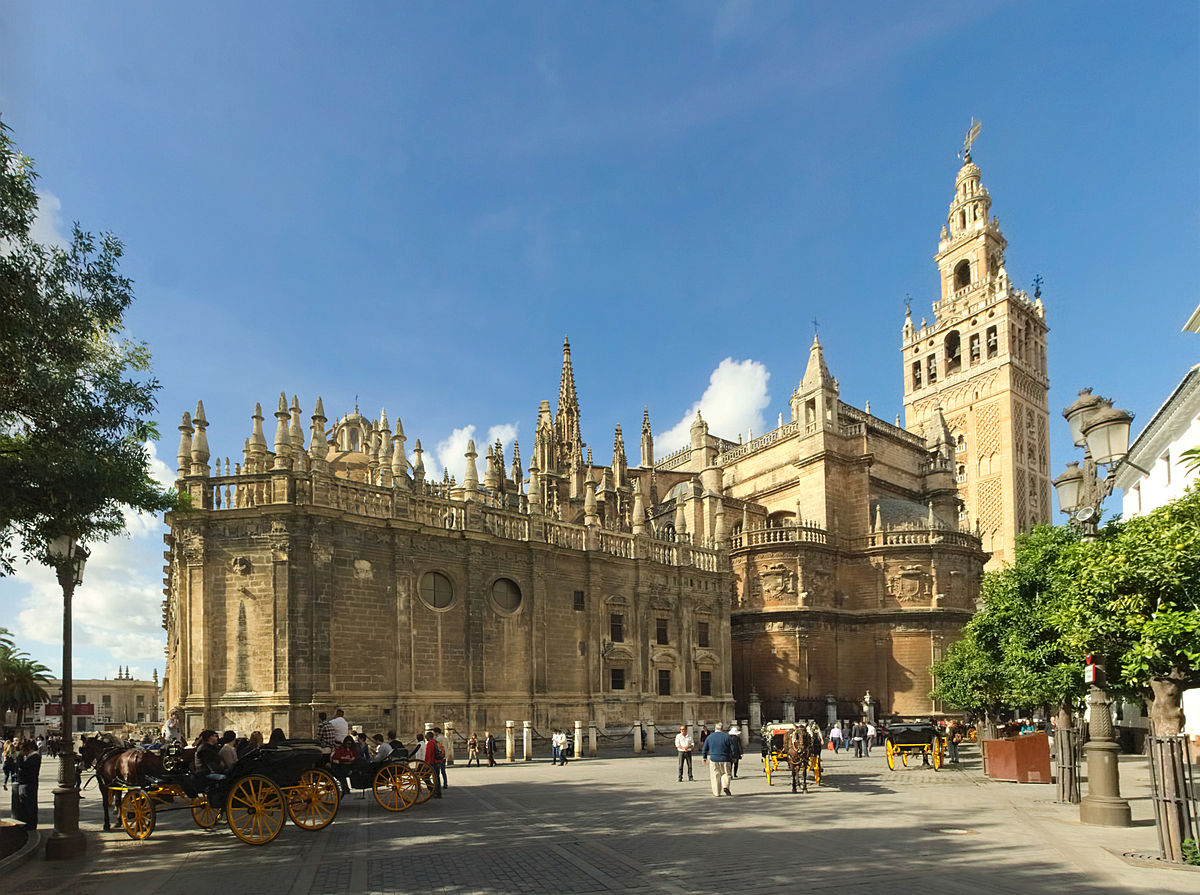Seville, the vibrant capital of the Andalusian region in southern Spain, is a city that effortlessly blends its rich history, stunning architecture, and lively culture. With its orange-tree-lined streets, historic neighborhoods, and iconic landmarks, Seville is a captivating destination that reflects the essence of Spanish heritage.
The city’s crown jewel is the Alcazar of Seville, a breathtaking palace complex that showcases a fusion of Mudejar, Gothic, Renaissance, and Baroque architectural styles. Originally constructed by the Moors, the Alcazar became a residence for Spanish monarchs, resulting in a stunning blend of Islamic and Christian influences. The intricate tilework, lush gardens, and ornate courtyards make the Alcazar a must-visit attraction that immerses visitors in the opulence of Spain’s past.
Adjacent to the Alcazar is the Seville Cathedral, the largest Gothic cathedral in the world and a UNESCO World Heritage Site. The cathedral’s towering Giralda, originally a minaret from the mosque that previously stood on the site, offers panoramic views of the city. Inside, visitors can explore the awe-inspiring interiors adorned with religious art, sculptures, and the tomb of Christopher Columbus.
Seville’s historic Jewish Quarter, known as the Santa Cruz neighborhood, is a maze of narrow streets, hidden squares, and whitewashed buildings adorned with colorful tiles. Wandering through the labyrinthine alleys, visitors encounter charming plazas, like the Plaza de los Venerables, and stumble upon hidden gems such as the Casa de Pilatos, a stunning mansion that combines various architectural styles.
The Metropol Parasol, colloquially known as “Las Setas” (The Mushrooms), is a modern architectural marvel that stands in stark contrast to the city’s historic core. This wooden structure, resembling giant mushroom-shaped umbrellas, provides shade for the square below and offers panoramic views of Seville.
Seville’s Triana district, located across the Guadalquivir River, is a lively and historic neighborhood famous for its ceramics and vibrant flamenco culture. The Castillo de San Jorge, an ancient fortress, and the vibrant Triana Market are notable attractions in this charismatic district.
Flamenco, the passionate and emotive Spanish art form, finds its home in Seville. The city boasts numerous flamenco tablaos and venues, such as the iconic Tablao El Arenal, where visitors can experience the soul-stirring performances of dancers, guitarists, and singers.
Seville’s Semana Santa (Holy Week) is one of the most famous religious celebrations in Spain. The city comes alive with processions featuring ornate floats, hooded penitents, and the somber sound of marching bands. Another major event is the Feria de Abril, a week-long festival characterized by lively music, colorful traditional costumes, and the spectacle of Sevillanos dancing and celebrating in casetas (decorated tents).
Seville’s culinary scene is a gastronomic delight, with tapas bars, traditional bodegas, and fine dining establishments offering a taste of Andalusian flavors. Local specialties include salmorejo, pescaíto frito (fried fish), and the famous Sevilla oranges used to make refreshing juices and marmalades.
In conclusion, Seville stands as a city that effortlessly marries its rich historical legacy with a dynamic and passionate contemporary spirit. Whether marveling at architectural wonders, indulging in local cuisine, or immersing oneself in the rhythms of flamenco, a visit to Seville promises an unforgettable journey through the heart of Andalusia’s cultural and artistic heritage.

